Mastering the Bow (Part 2: Spiccato)
Developing the Stroke Systematically through a Variety of Exercises and Etudes
-
Ships in 1 to 2 weeks
Details
Description
SKU: CF.BF113
Developing the Stroke Systematically through a Variety of Exercises and Etudes. Composed by Anton Slama, David Popper, Franz Simandl, Gaelen McCormick, Giovanni Bottesini, Isaia Bille, Jacques Fereol Mazas, Johannes Palaschko, Justus Dotzauer, Ludwik Milde, Rodolphe Kreutzer, and Sebastian Lee. Edited by Gaelen McCormick. SWS. With Standard notation. 72 pages. Carl Fischer Music #BF113. Published by Carl Fischer Music (CF.BF113).ISBN 9780825888861. UPC: 798408088866. 9 x 12 inches. Text: Gaelen McCormick.
Continuing her masterful series, Carl Fischer is proud to present Gaelen McCormick’sMastering the Bow (Part 2) Studies for Bass: Spiccato. Beginning with quotesfrom famous pedagogues Ivan Galamian and Simon Fischer, spiccato strokes aredefined and each variety of bow-stroke is examined and elaborated upon in detail.Collections of etudes have been carefully selected and presented from the methodsof Dotzauer, Kreutzer, Lee, Popper, Billè, Slama, Simandl, Bottesini, Palschko andMilde. Guidelines are provided for studies, as well as extensive instruction on allaspects of spiccato playing. Written in a clear and progressive manner, this book isas Orin O’Brien (New York Philharmonic) writes in her foreword “a gold-mine ofhelpful information and inspiration.”.
Gaelen McCormick’s book on spiccato is an extraordinarily thorough exploration of many descriptionsof the “how” and of the “what and when” of this particular bowing technique. The first eleven pages ofquotes from famous pedagogues Ivan Galamian and Simon Fischer defining the vocabulary of spiccatostrokes, coupled with her detailed definitions and suggestions on how to envision and produce each kindof bow stroke, are invaluable and extremely clear.The collections of etudes from Dotzauer, Kreutzer, Lee and Popper are enticing additions to the morefamiliar (perhaps not often practiced) Billè, Slama, Simandl and Bottesini etudes, and will fascinatebassists and encourage exploration of these necessary combinations of bow strokes. Etudes by Palaschkoand Milde were unfamiliar to me and made me want to pick up my bow to try them.In Etude No. 24 (Slur and Spiccato) Gaelen makes an excellent point about starting a spiccato aftera slur: “Clip the last note of the slur to help resume spiccato.” It is virtually impossible to play a slurdirectly into a note that is staccato or off the string: many students are puzzled by this at first, and it isgood to have the information that it is permissible (necessary!) to “steal” a bit of the length of the slur inorder to have the bow slightly in the air to attack the separate note.This book is a gold-mine of helpful information and inspiration. It will be a great addition to FredZimmermann’s Contemporary Concept of Bowing. Each etude is short enough to inspire and longenough to do what needs to be done.
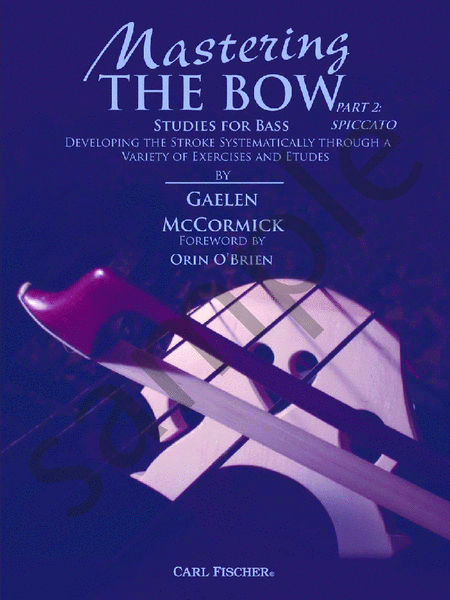
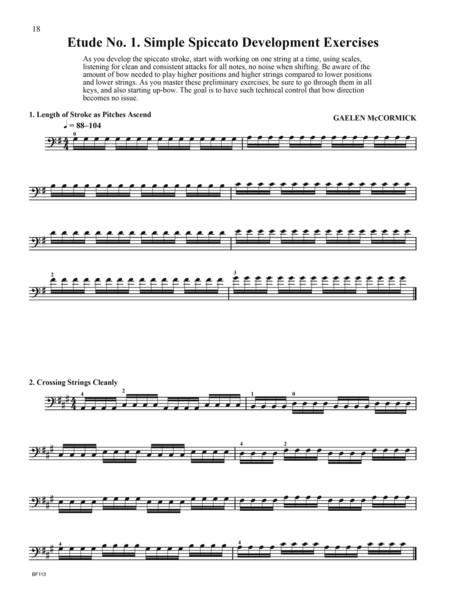
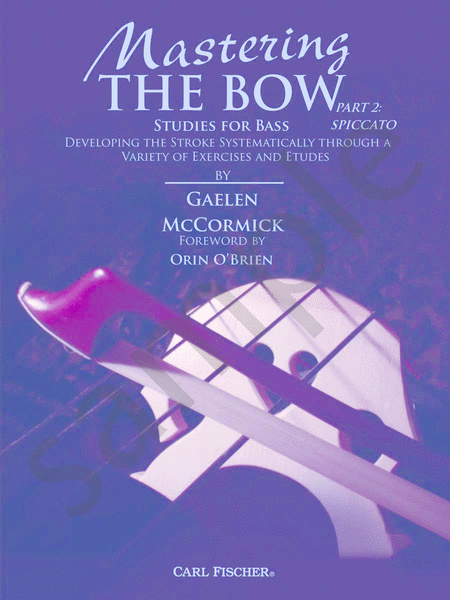
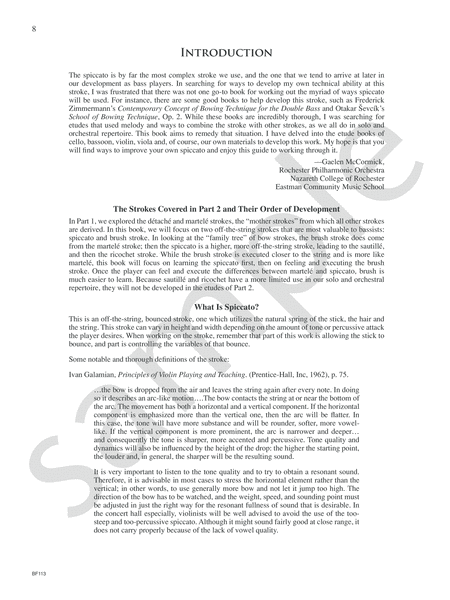
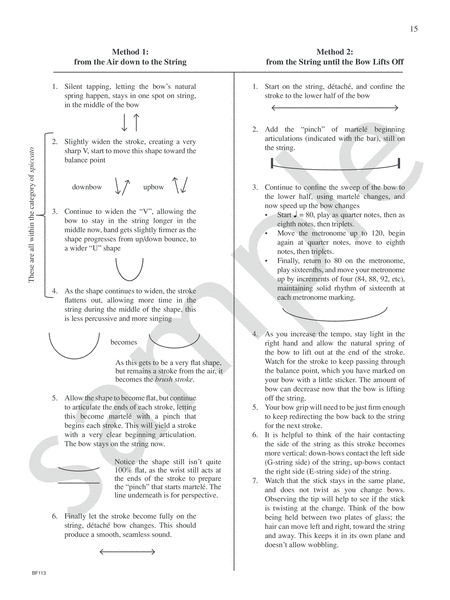
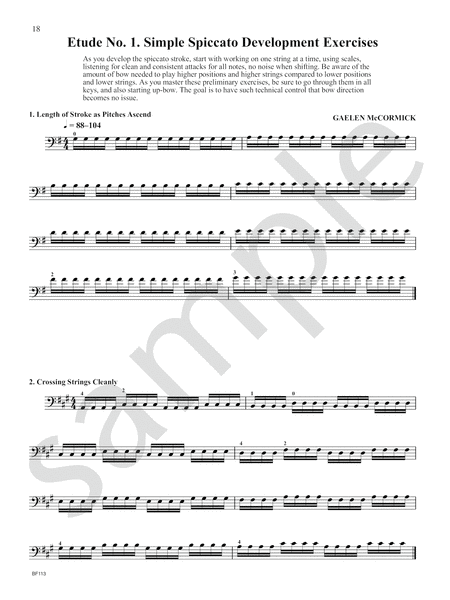
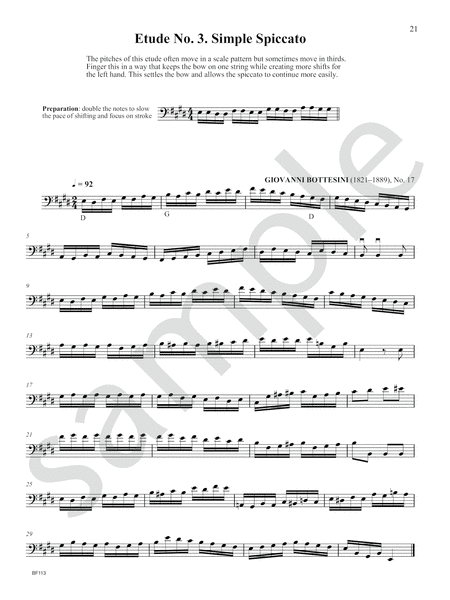
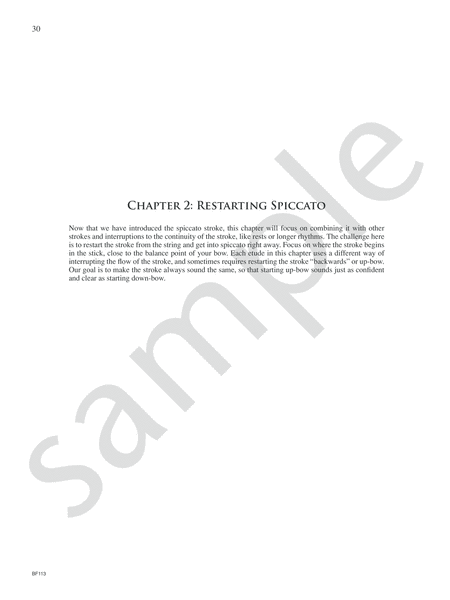
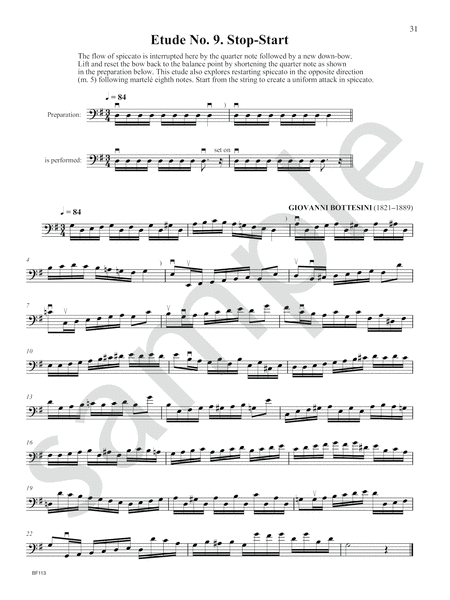
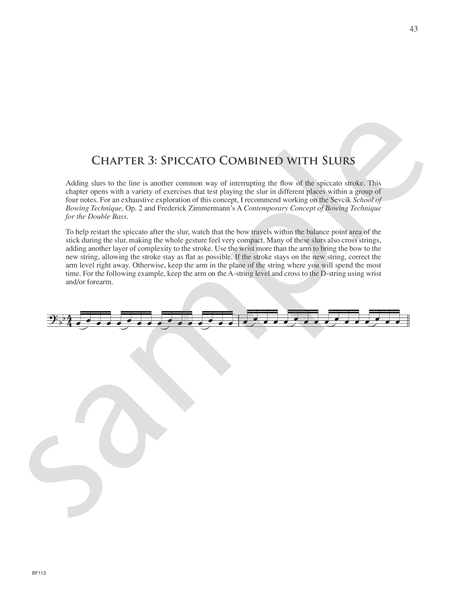
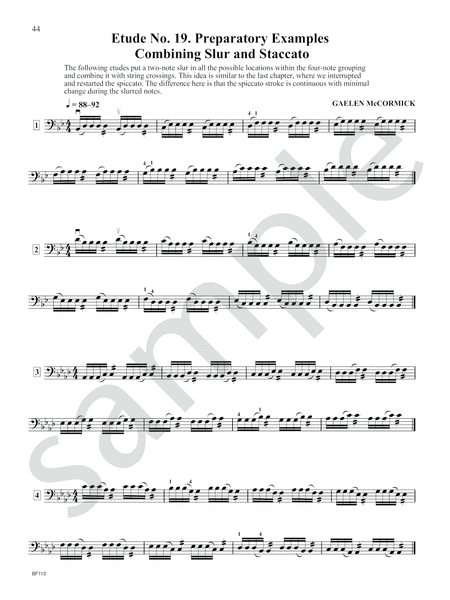
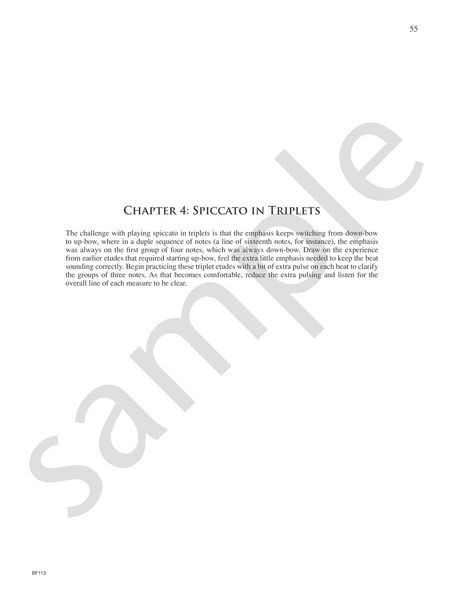
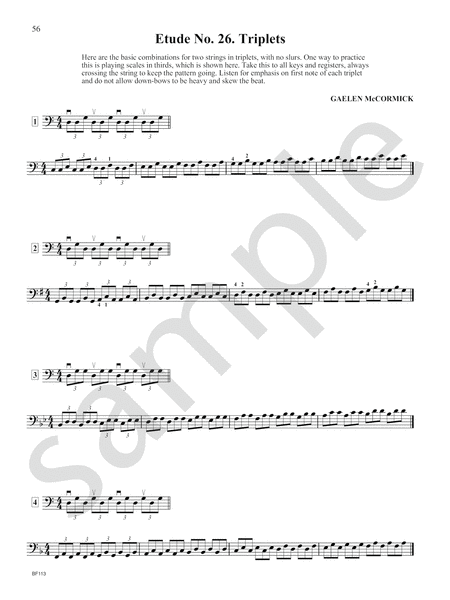
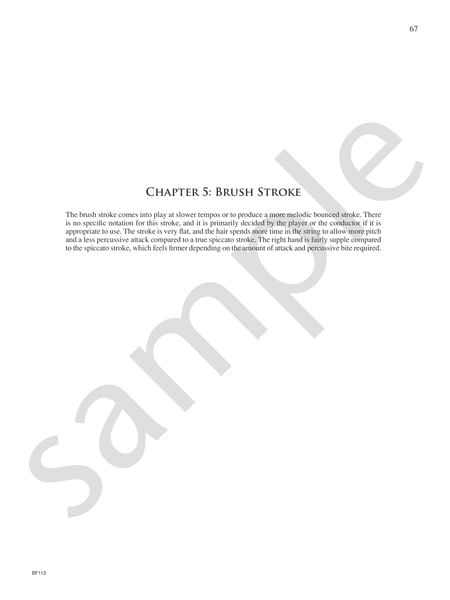
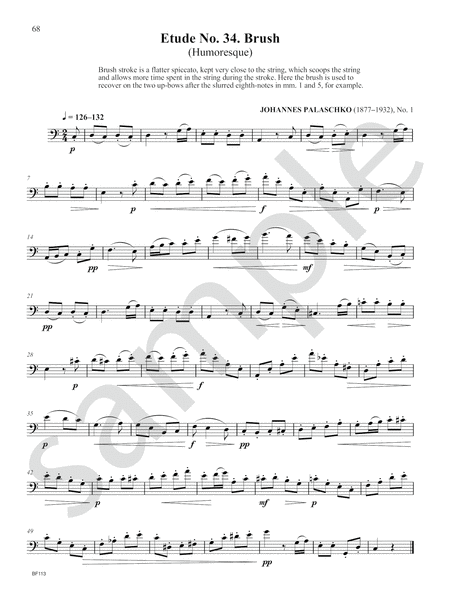
 Share
Share